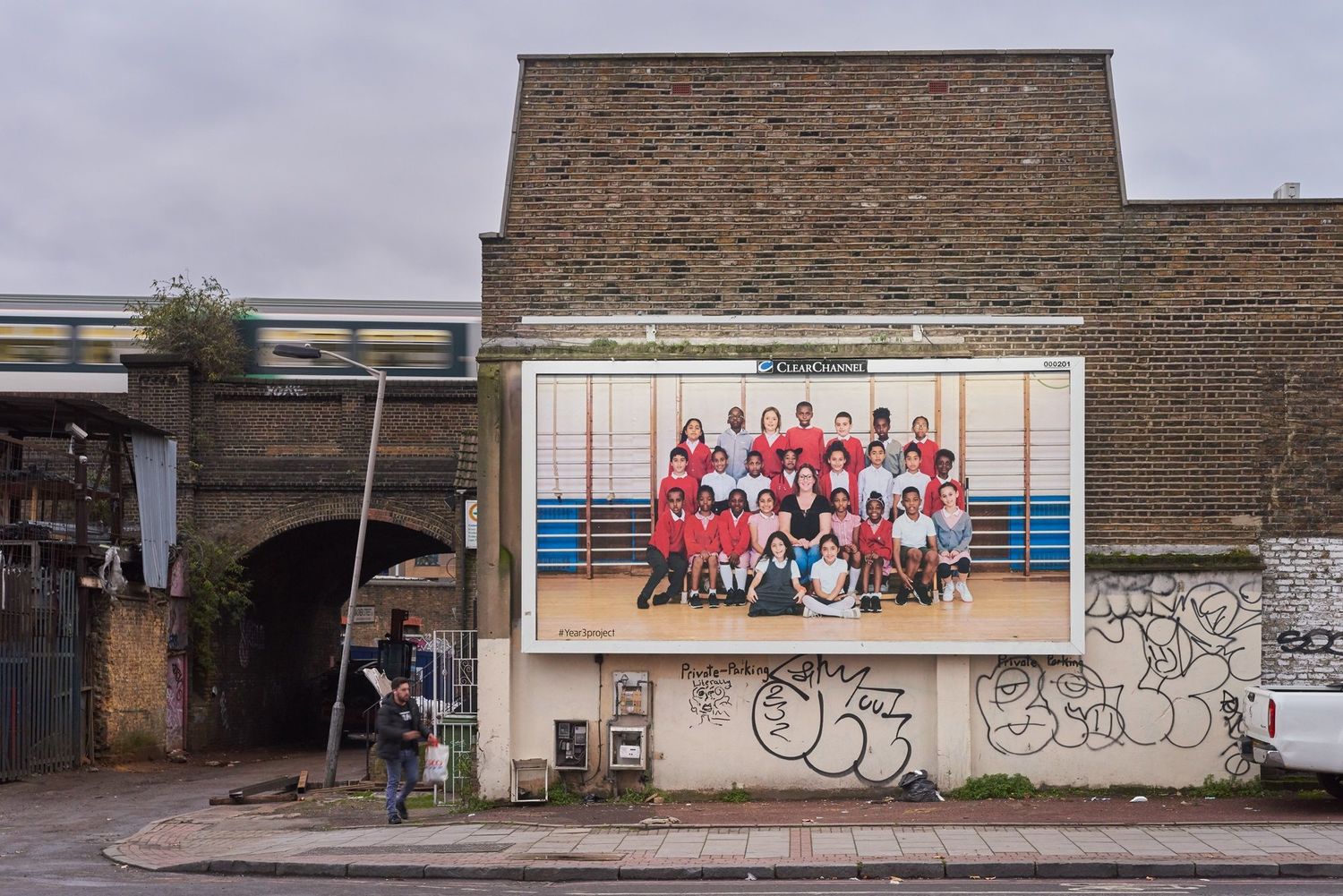While not a photographer, Steve McQueen has an ability to realize the potential and possibilities of photography that many photographers miss. As a celebration of the cultural diversity of the city he was born and grew up in, he invited all the schools in London to allow a class photograph to be made of children in Year 3, aged seven or eight. This age was chosen as it is generally seen as a milestone age at which children are becoming conscious of a world beyond their immediate family.

Two thirds of the schools agreed. The resulting standardized school class portraits were far-reaching in scope, including state primary schools, independent schools, faith schools, special schools, pupil referral units and home-educated students. Blocks of hundreds of the class photographs are presented in Tate Britain’s spacious neo-classical Duveen Galleries: “76,146 pupils — 1,540 schools — one portrait of London” as the promotional Tate video describes it.

The project also spread out into the city’s streets. In a collaboration with public arts organization Artangel, many of the class photographs were displayed on over 600 billboards across London’s 33 boroughs in November 2019. An important part of this project, not visible in the portraits themselves, was the education program developed in collaboration with creative education specialist, A New Direction. It began with activities surrounding the making of the school portrait and culminated with the Year 3 children and teachers visiting Tate Britain, not just to find and view their photo—large magnifiers allow photos at any height to be seen in greater detail—but also to encounter and engage with art in the museum.
In interviews about the project, McQueen points out how important school trips were for him as a child in London, including a trip to the National Gallery, where “the only black people that I saw were the guards.” Art school for McQueen was “his liberation” and Year 3 “is about creating a path for children to grow and to go beyond their own expectations.”

McQueen’s last ambitious public project with photography was unrealized. For this, portraits of soldiers killed in the Iraq war were to be presented on stamps, Queen and Country, 2007-10, memorials and tributes to the war dead that would have been brought intimately home to people through the mail.
Year 3 is a mass document, focused on schoolchildren, and their teachers, in London, at an age integral to their potential and creativity. There is a certain nostalgia for a cohesive, unifying and celebratory portrait tradition, distinct from the realm of Instagram and Snapchat. In the context of a divided Britain the collective portrait of a multicultural London offers a hopeful, democratic vision, bereft of sentiment.

It is also a tribute to the work teachers do. But, of course, the potentiality of all the children is and can never be the same. The school portraits are treated equally but divisions and differences do not go away. Displayed in the context of art, McQueen’s championing of the diversity of London’s next generation, is also a championing of the value and need for culture and creativity. But however benign and happy the portrait, the British education system is not a level playing field.
Editor’s note: Steve McQueen: Year 3 is on view at Tate Britain in London until May 3rd. A major retrospective spanning the past 20 years of the artist’s work is at Tate Modern until May 11th. Ongoing COVID-19-related measures will likely affect the opening of this institution, so please be sure to visit their website to keep updated.










